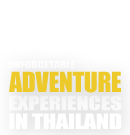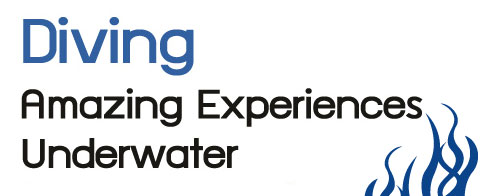
![]() cuba diving is Thailand’s most popular water sport and the country’s coast and islands have come of the most beautiful dive sites in the world. The water is clear, with plentiful marine life, and transport and accommodation readily available.
cuba diving is Thailand’s most popular water sport and the country’s coast and islands have come of the most beautiful dive sites in the world. The water is clear, with plentiful marine life, and transport and accommodation readily available.
There is a high standard of training, too. All reputable dive shops are affiliated with PADI or other international dive bodies, and most holding courses in several languages.
With thousands of miles of coastline, hundreds of island, dazzling marine life and breathtaking natural beauty, it is no wonder that most visitors to Thailand head for the sea for at least part of their stay.
At present, two of the most popular new activities in Thai waters are wreck diving, mostly in the Gulf of Thailand, and cave diving along the Andaman Sea coastline. The Gulf of Thailand has many pottery wrecks from sunken merchant vessels, some of which date as far back as 700 years.
At some recommended sites, the water is so clear that the underwater world of whale sharks, manta rays, marlin, flying fish, dolphins and coral reefs is visible from the surface. All over Thailand, you can expect modern amenities, international standard boats and professional facilities.
Diving is possible at all times of the year, although visibility changes according to the season. In the Andaman Sea, the best time is from October to April, and the Gulf of Thailand from May to September.
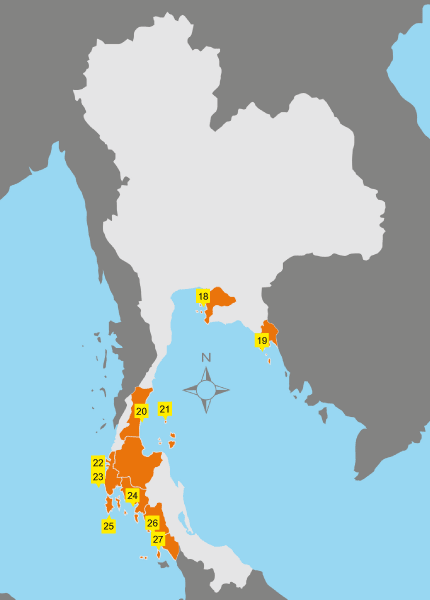
Diving in Your Style
There are 3 types of diving which are;
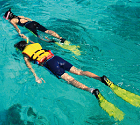 Snorkelling or Skin Diving
Snorkelling or Skin Diving
is the practice of swimming on or through a body of water while equipped with a diving mask, a shaped tube called a snorkel, and usually swim fins. The primary appeal is the opportunity to observe underwater life in a natural setting without the complicated equipment and training required for scuba diving and, it appeals to all ages because of how little effort there is, and without the exhaled bubbles of scuba-diving equipment.
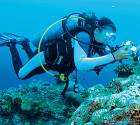 Scuba
Scuba
(Self Contained Underwater Breathing Apparatus) - Unlike early diving, which relied either on a breath-hold or on air pumped from the surface, scuba divers carry their own source of breathing gas (usually compressed air), allowing them greater freedom of movement than with an air line. Depending on the purpose of the dive, a diver usually moves underwater by swim fins attached to the feet, but external propulsion can come from an underwater vehicle, or a sled pulled from the surface.
-
There are many diver level courses ;
- Open Water Diver Course
- Advanced Open Water Diver Course
- Rescue Diver Course
First option: You can take an Adventure Diver Course to serve your preferred interest; such as, Deep Dive, Wreck Dive, Night Dive, Cave Dive, etc. After finishing one of these diver courses, then you will become a Master Scuba Diver.
Second option: In case you wish to open a Scuba diving school, then you have to take a Divemaster Course.
 Snuba
Snuba
(Self Non-contained Underwater Breathing Apparatus) is an underwater breathing system developed by Snuba International. The swimmer uses swim fins, a diving mask, weights, and diving regulator as in scuba diving. The air, however, instead of coming from tanks strapped to the diver’s back, comes through a long hose from tanks on pontoon rafts on the surface. Snuba often serves as a form of introductory diving, in the presence of a professional, insured guide, and following a half-hour lesson (but not requiring scuba certification).


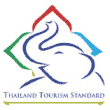
Thailand Tourism Standards for Diving
To ensure the safety of tourists who choose to participate in diving, the Department of Tourism, Ministry of Tourism and Sports, has issued the Thailand Tourism Standards for Diving Operators and Sites to provide guidelines on the sport with emphasis on safety for participants.
For more information, visit http://www.tourism.go.th
The Key Scuba Diving Safety Rules
- Avoid drinking alcohol before diving.
- Do not eat food too much.
- Never dive alone.
- Use hand signals under the water.
- Avoid diving near boats.
- Should listen to your local guide and avoid diving in the area with a strong current.
- For snorkelling, make sure you wear a life jacket at all times.
- Be careful of getting contact with long spined sea urchins and jelly fish.
- Secure diving equipment; such as, gauges and spare regulators that may drag on coral or along the bottom.
- If something happens, stop, breathe, think and act. Do not panic and rush to the surface.
- Do not take short, shallow breathes and never hold your breath. Holding your breath underwater can lead to lung injuries and worse, in the extreme case.
- Move carefully and always be aware of exactly where your body and equipment are, relative to coral and other underwater features.
- Be careful not to touch anything with your fins, so as not to break coral or stir up sediment.
- Be especially aware of your buoyancy and placement at night and when taking photographs, as your path of vision is limited.
- When you are hovering over a reef, keep your eyes fixed on a reference object so you don’t drift or sink onto coral.
- Ascend slowly and with control as you ascend you are ridding your body of nitrogen in your tissues and bloodstream. If you ascend too quickly, you risk “the bends” or decompression sickness (DCS). You should not ascend more than 9 m per minute.
Diving Route in Thailand
| Place | Province | Season To Visit | Type | Sea | |
|---|---|---|---|---|---|
| 18 | Pattaya Dive Sites |
Chon Buri | Nov - Apr | Scuba | Gulf of Thailand |
| 19 | Ko Wai | Trat-Ko Chang |
Nov - Apr | Snorkelling | Gulf of Thailand |
| 20 | Mu Ko Chumphon | Chumphon | Apr - Oct | Snorkelling/ Scuba |
Gulf of Thailand |
| 21 | Ko Tao | Surat Thani | Apr - Oct | Snorkelling/ Scuba |
Gulf of Thailand |
| 22 | Mu Ko Surin | Phang-nga | Apr - Oct | Snorkelling/ Scuba |
Andaman |
| 23 | Mo Ko Similan | Phang-nga | Nov - Apr | Snorkelling/ Scuba |
Andaman |
| 24 | Mu Ko Phi Phi | Krabi | Nov - Apr |
Snorkelling | Andaman |
| 25 | Ko He and Mu Ko Racha | Phuket | Nov - Apr |
Snorkelling/ Scuba |
Andaman |
| 26 | Ko Kradan | Trang | Nov - Apr | Snorkelling | Andaman |
| 27 | Ko Tarutao & Ko Adang-Rawi |
Satun | Nov - Apr | Snorkelling/ Scuba |
Andaman |



